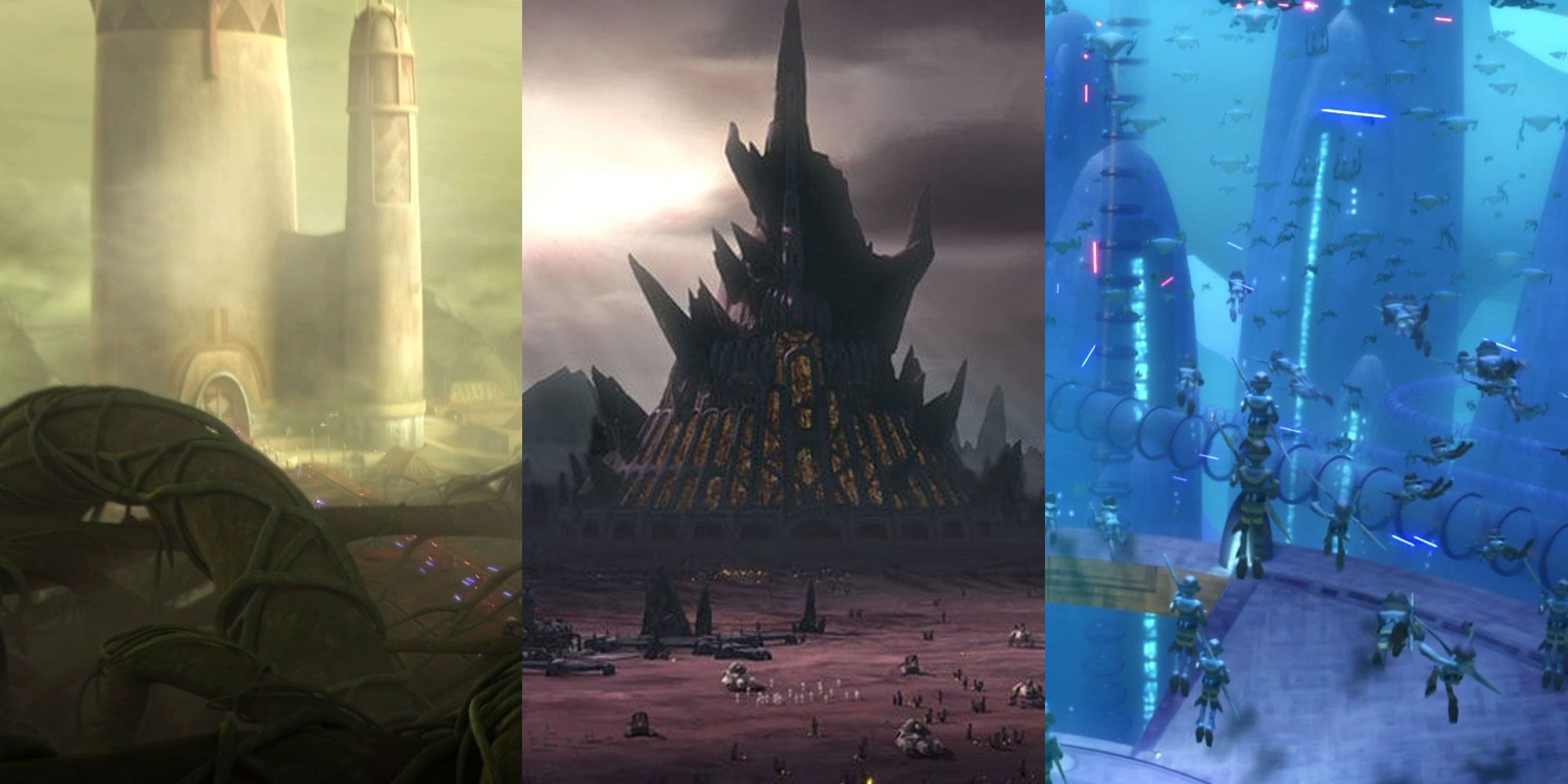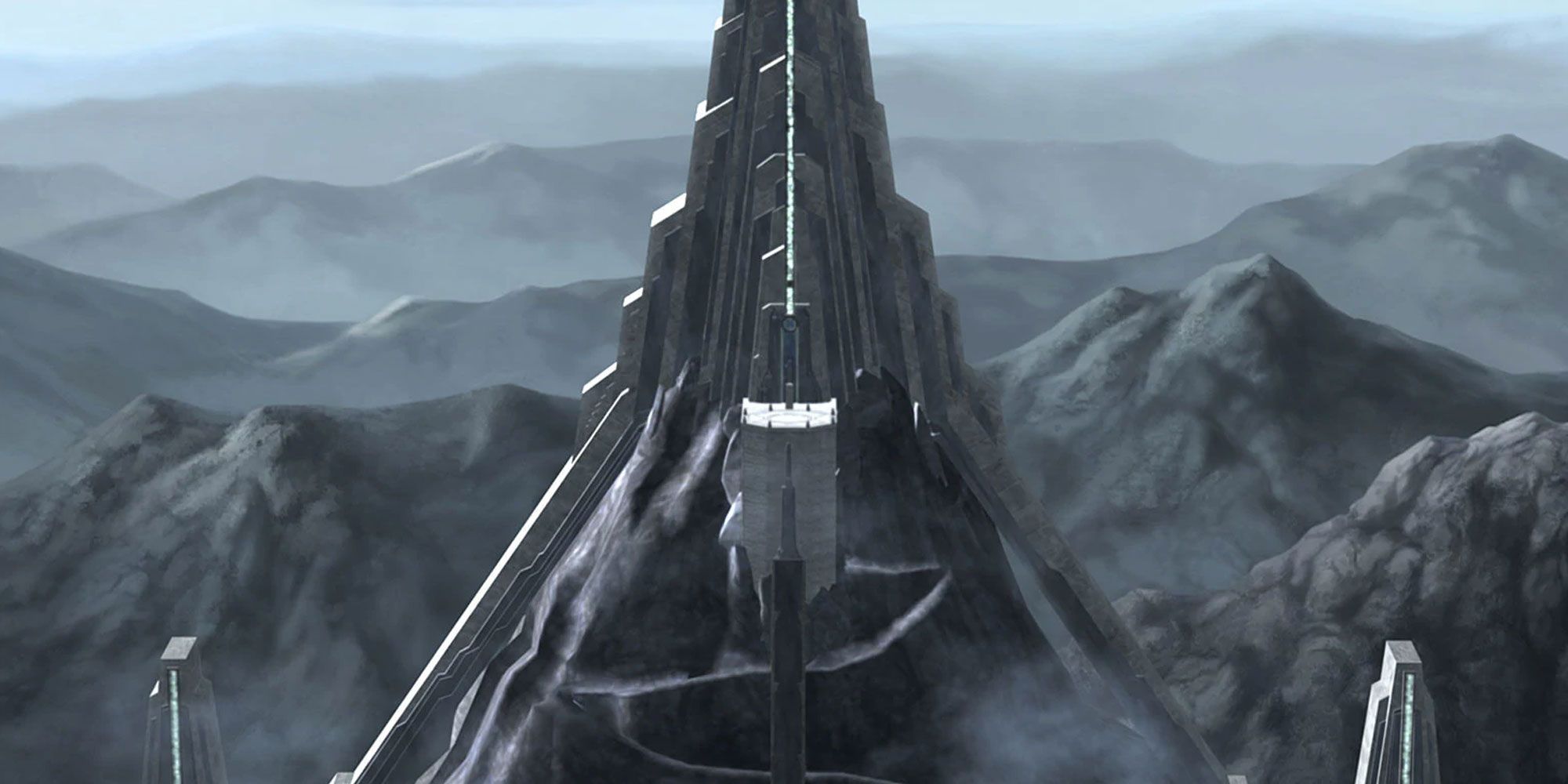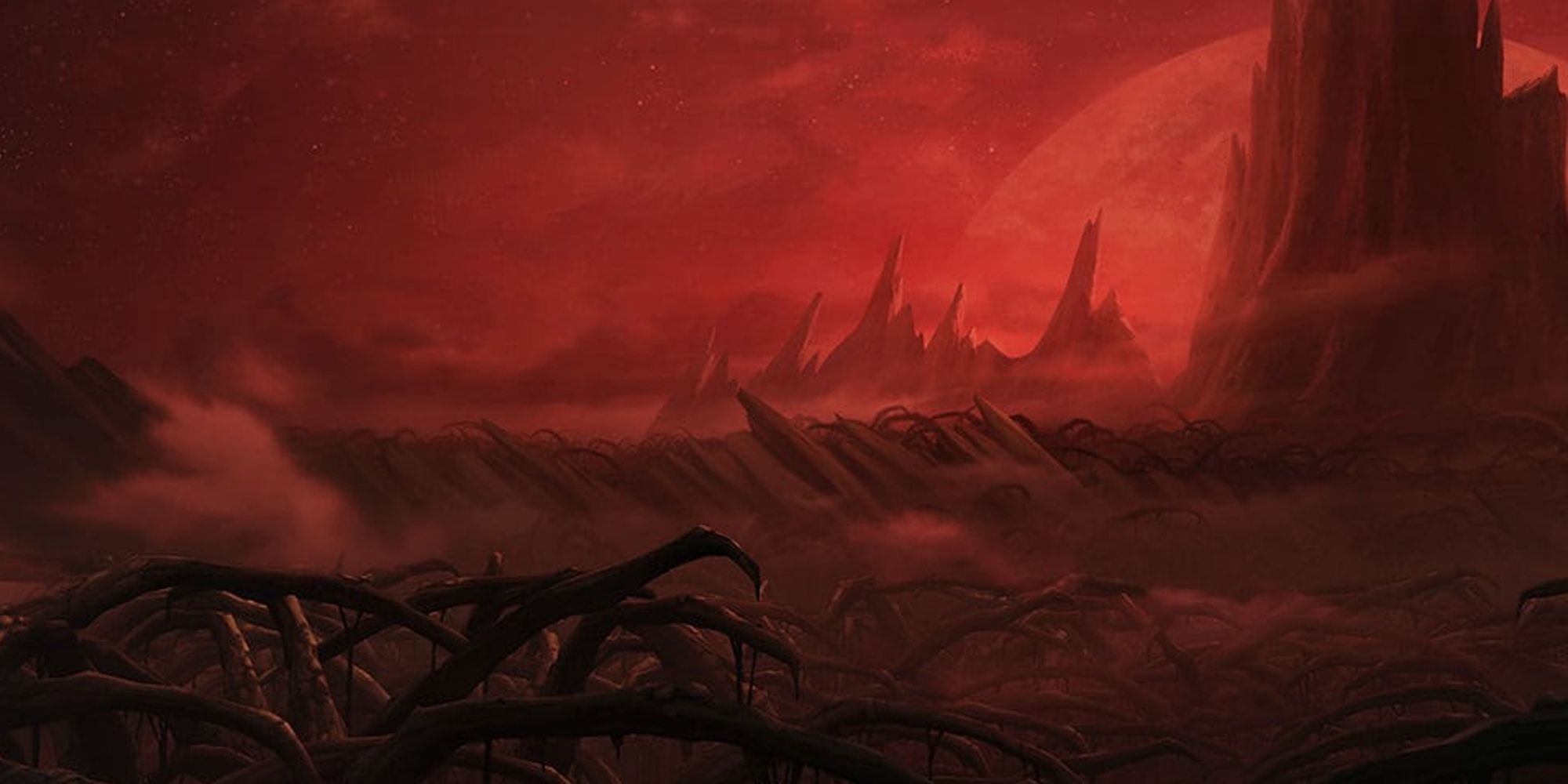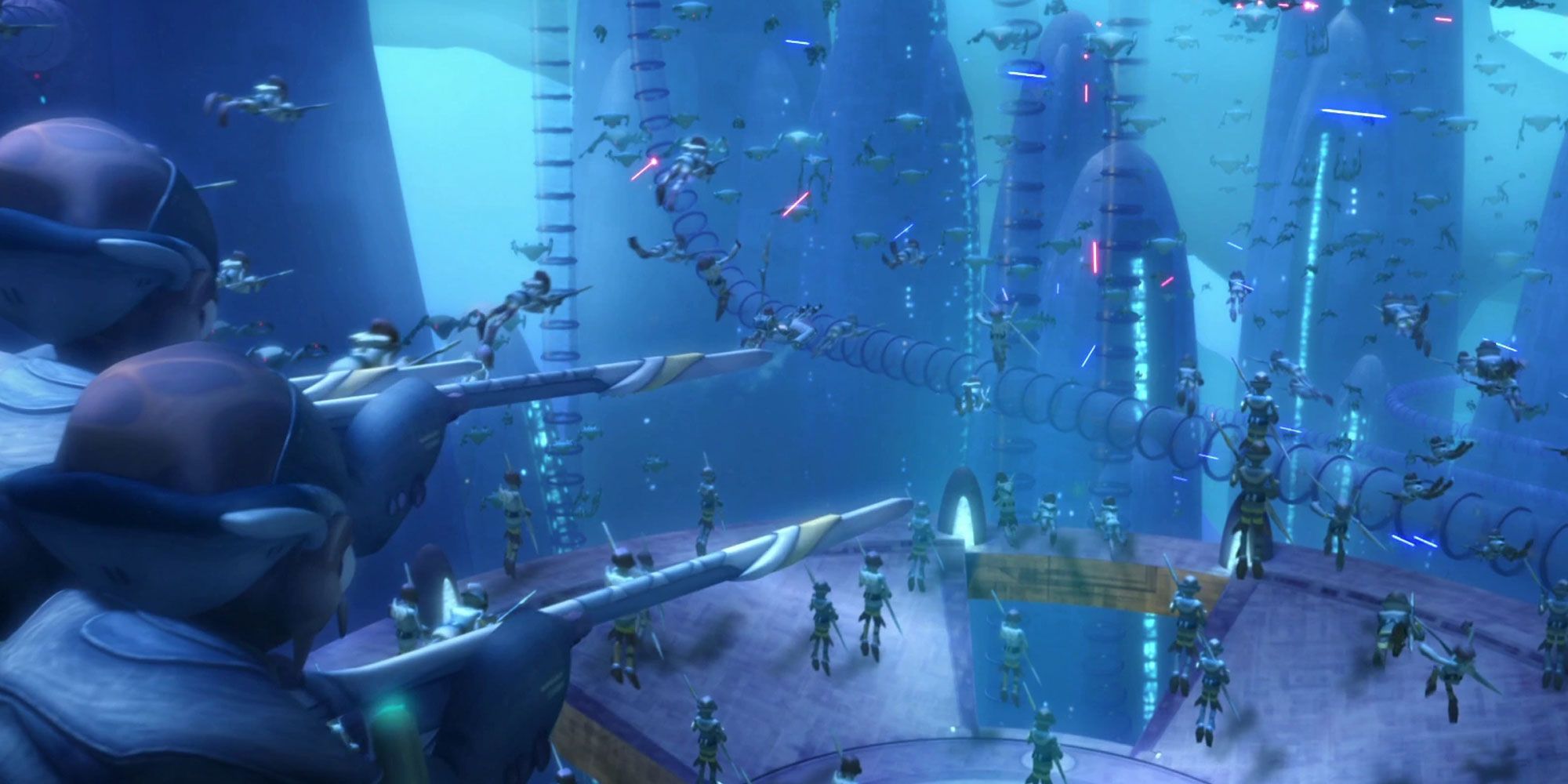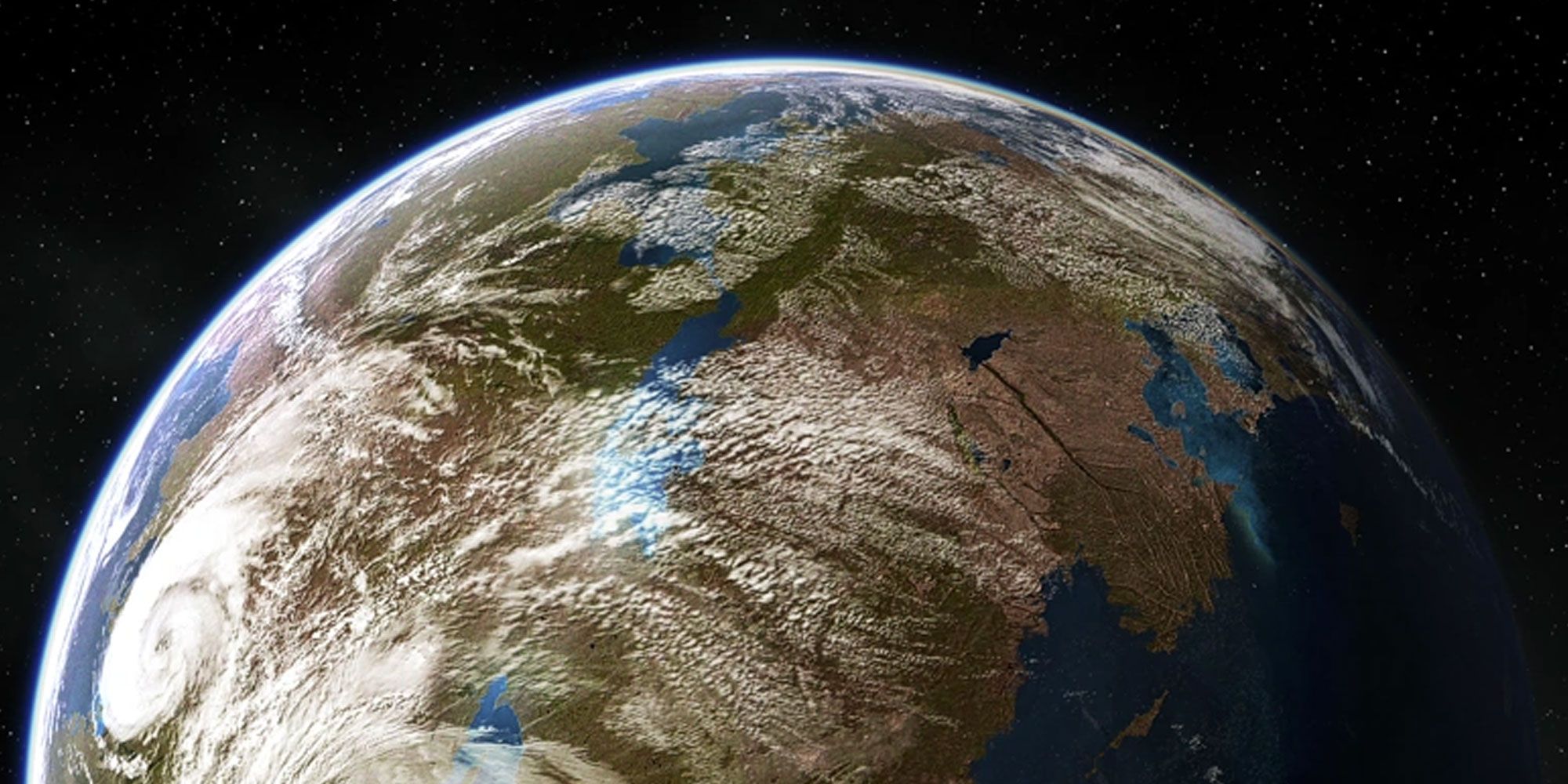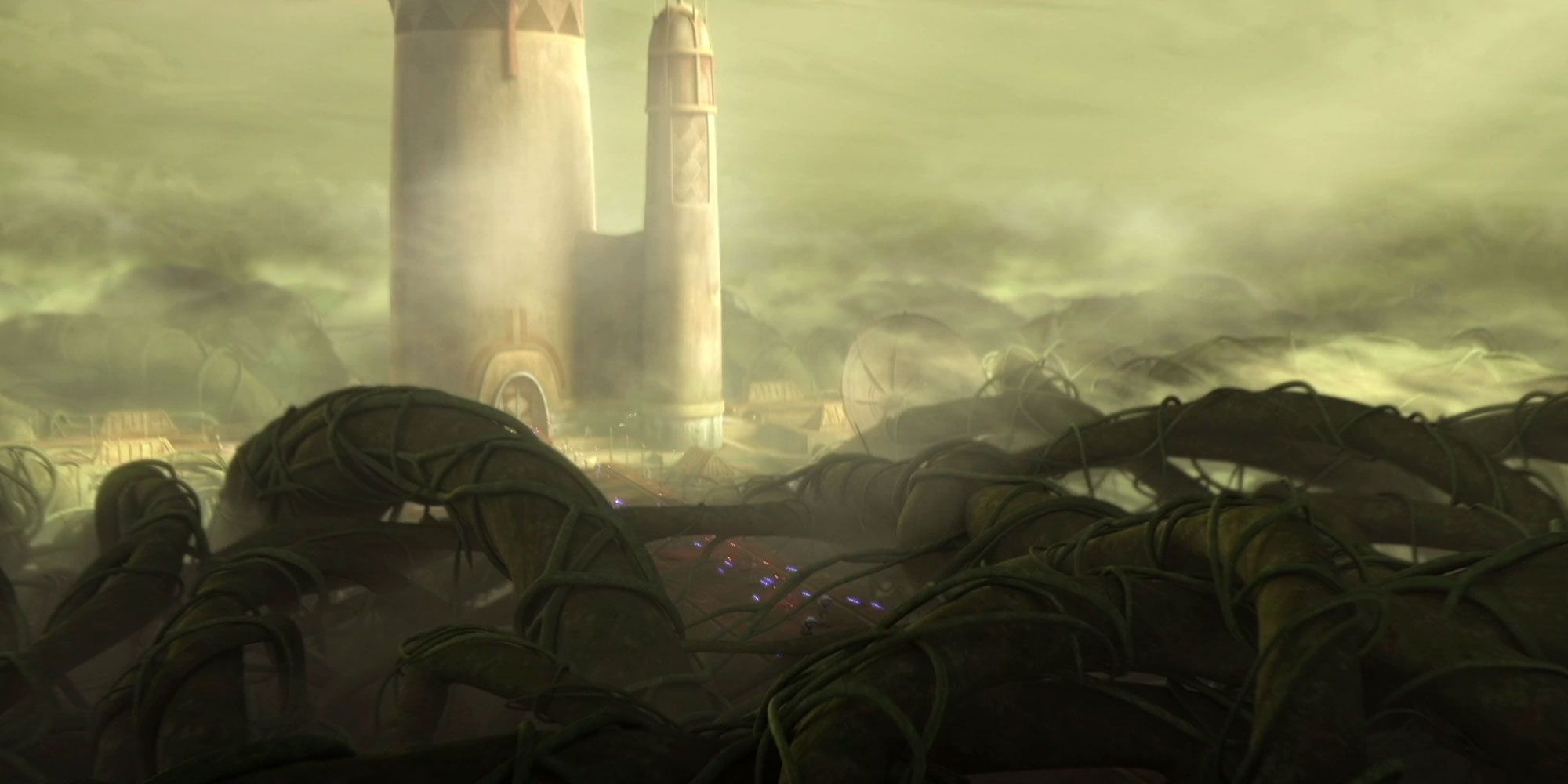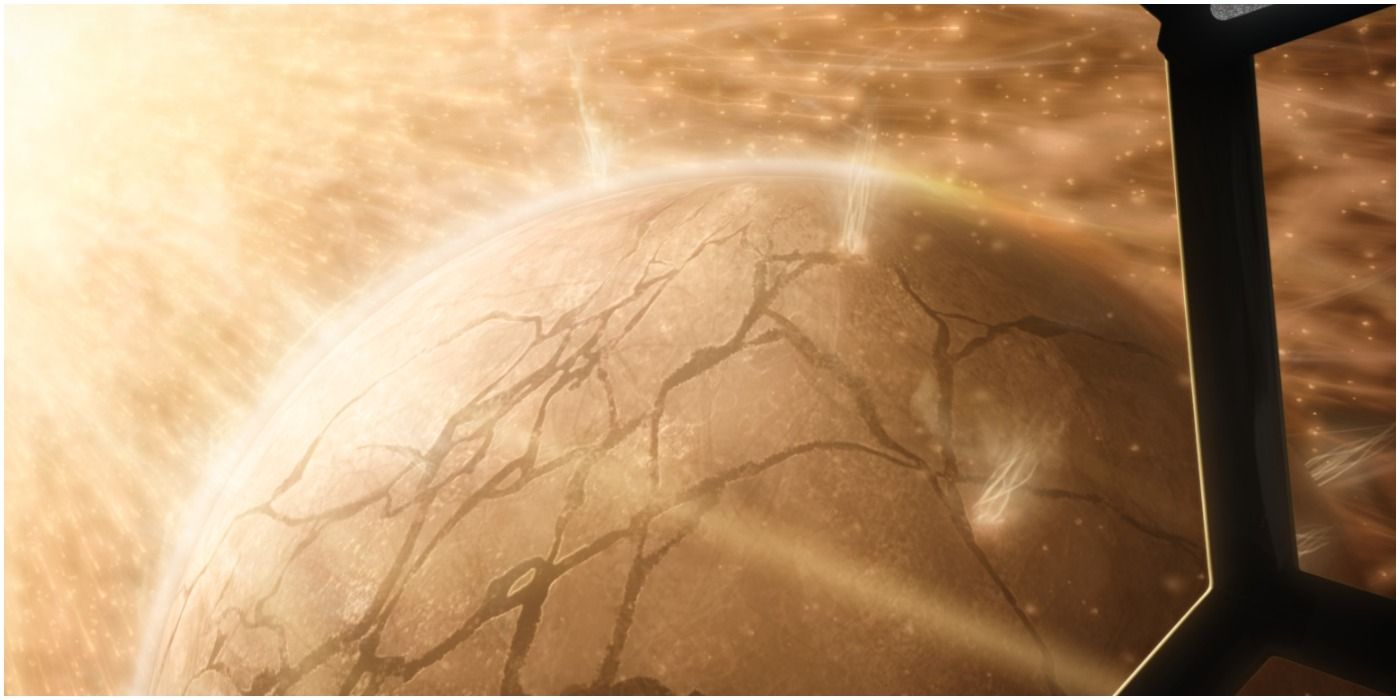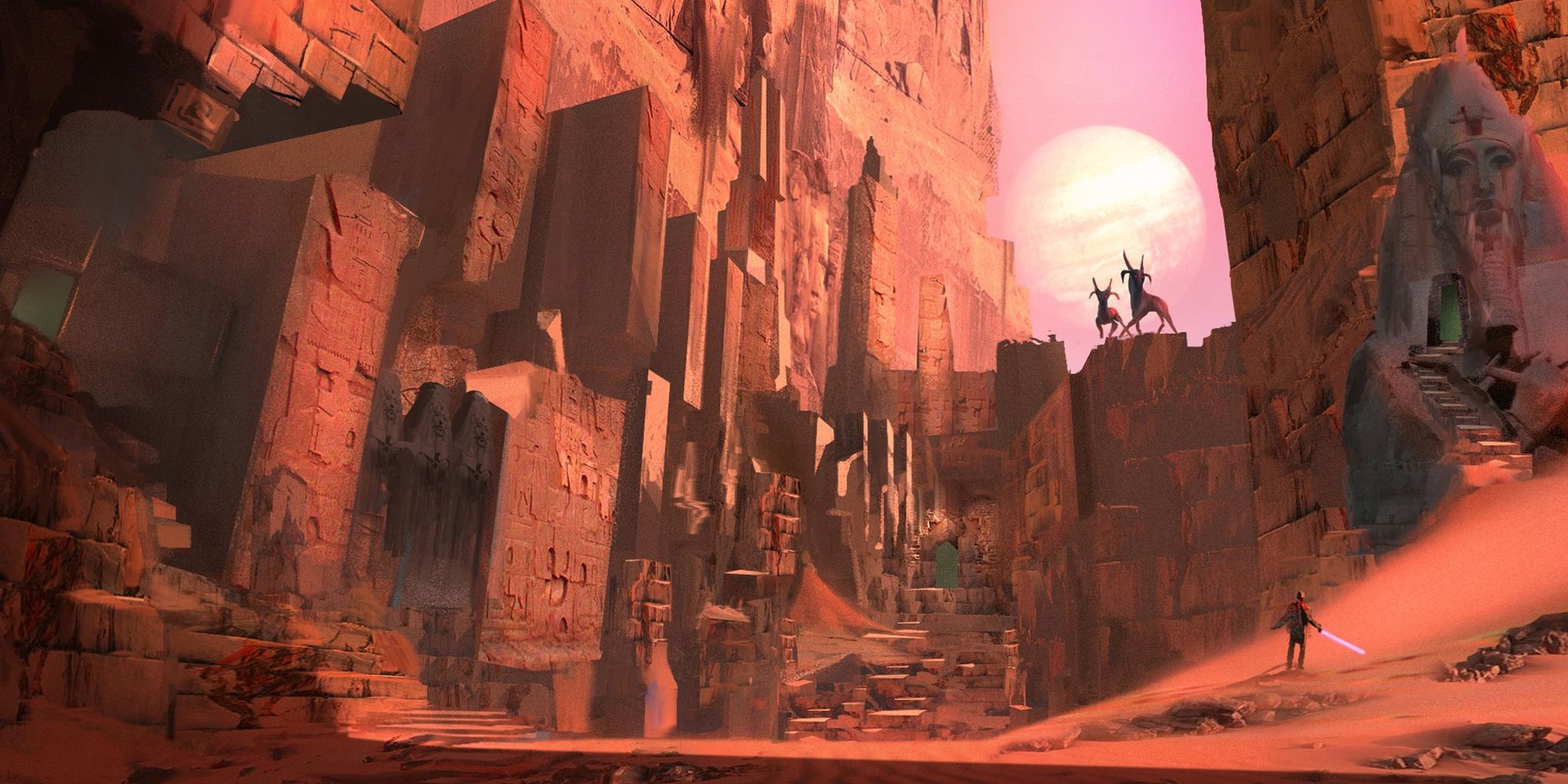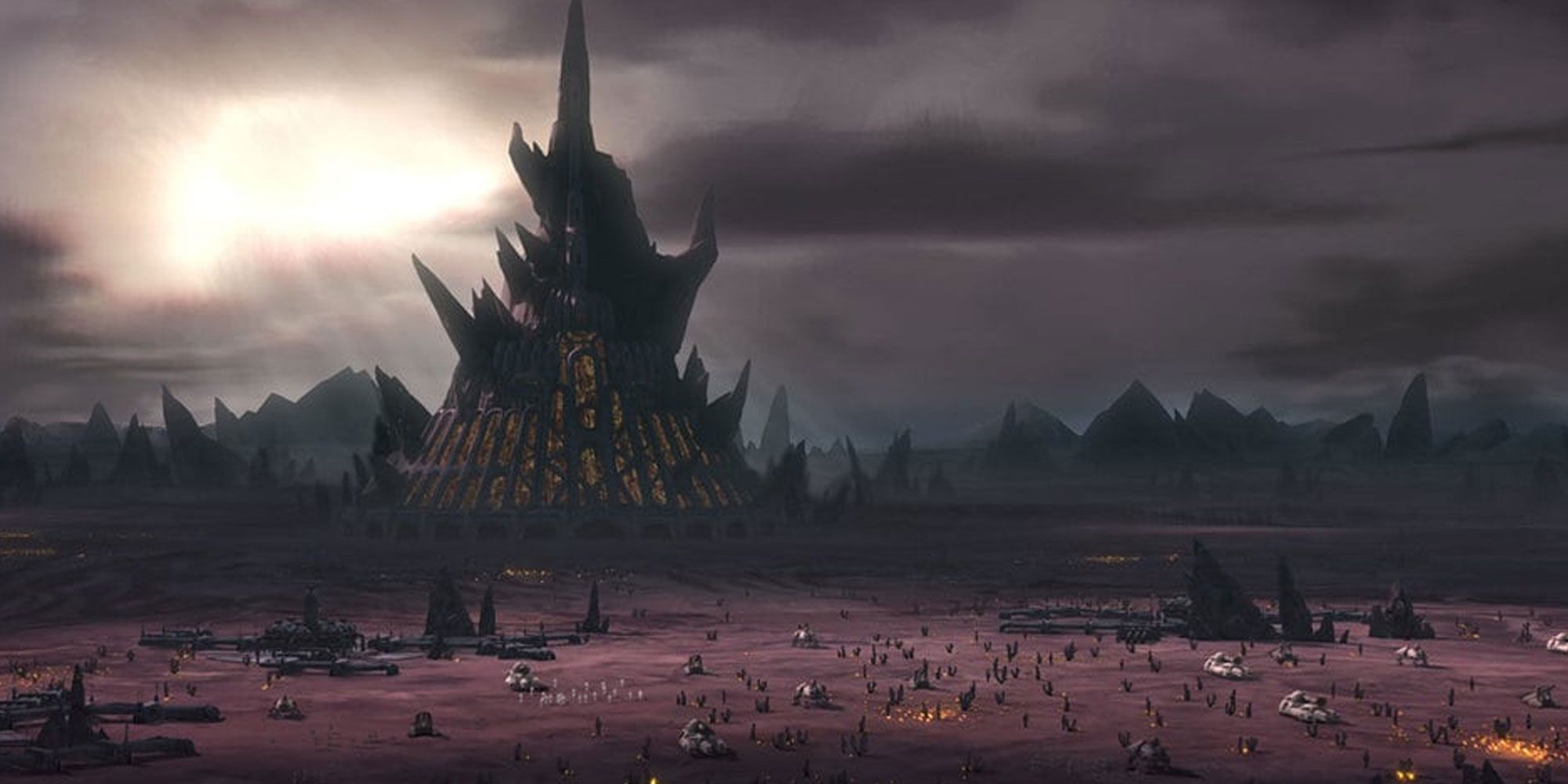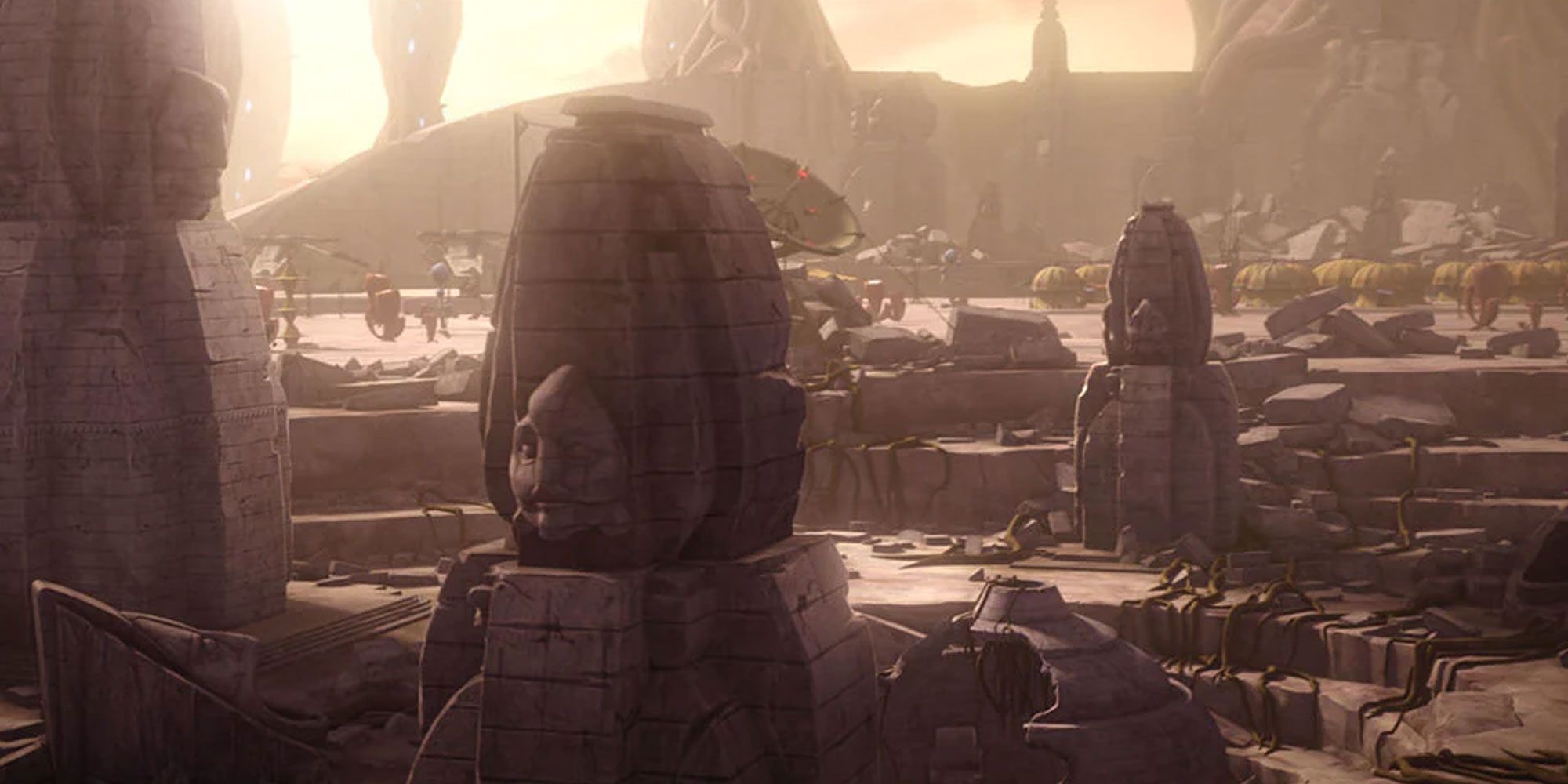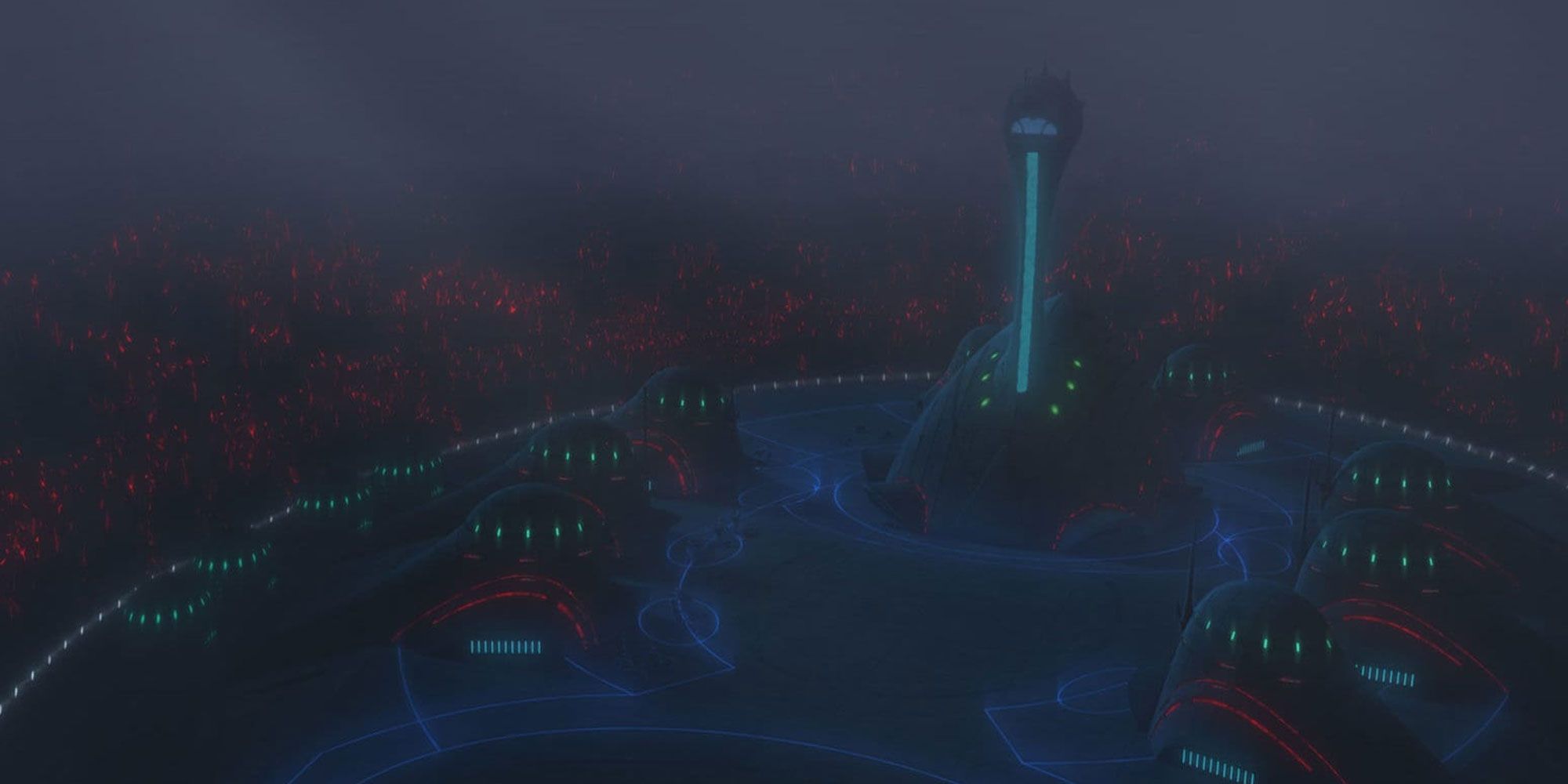Among the many reasons Star Wars devotees are excited about the Obi-Wan Kenobi series is the anticipation of being introduced to new worlds in the galaxy far, far away. Tatooine, the desert planet that Luke was desperate to escape and a place that was only ever supposed to be the starting point for the hero's journey, has now had a starring role in many Star Wars media.
While there's no avoiding Tatooine in Obi-Wan Kenobi, hopefully the show will expand the world building and reveal some of the lesser-known, under-valued planets in the galaxy. All of these were featured on either the animated Clone Wars, Rebels, or both, but often only briefly, giving future filmmakers and showrunners room for creative freedom.
Mortis
The curious home of the Father, the Daughter, and the Son was featured in only a few episodes of Star Wars: The Clone Wars, but it was quintessential to Star Wars lore. It's where the balance of the Force was maintained and where Anakin Skywalker faced one of his biggest tests and proved how powerful he was.
A live-action version would be epic. By day, it was a paradise where the seasons changed with the time of day, yet night summoned chaos and danger. Mortis was unmappable, dreamlike, and wielded control over all who visited. While the Holy Trinity metaphor was blatant, there was enough originality and ambiguity to keep it compelling.
Dathomir
Both Darth Maul and Asajj Ventress hail from this remote planet strong with the dark side of the Force. Its geography was diverse for a Stars Wars planet, which often only have one or two climates. Beneath a layer of red fog was an Earth-like setting full of shadows and magic, ripe with opportunity for sweeping cinematography.
Dathomir's history was even more diverse than its geography. It was a matriarchal society riddled with dichotomies that would inspire thrilling storylines. There was even a built in rivalry between the dominant, mystical Nightsisters and the warrior Nightbrothers, characters who would garner automatic accolades for make-up artists.
Mon Cala
This oceanic planet known for its shipbuilding industry was crucial during the Clone Wars. Tense relations between the Mon Calamari ("It's a trap!") and the Quarren softened when they joined forces to rid the world of the Confederacy. Mon Cala remained loyal to the Alliance time after time, bravely choosing the side of the light even at the cost of its own freedom. Like Tatooine, Mon Cala had twin suns, but its aquatic setting couldn't get any different from the harsh sands of Luke and Anakin's youths.
If complex politics and vast underwater cities aren't compelling enough, a squid-like creature lived in the ocean depths (and once picked a fight with Darth Vader).
Chandrila
This small planet once temporarily served as the seat of the Galactic Senate. The homeworld of both Mon Mothma and Ben Solo, Chandrila has been featured in many novels and comic books. It appeared only in Star Wars: Rebels as a hologram, leaving it open to interpretation.
While not as geography-rich as some of the other planets on this list, the noble world had something many Star Wars locales lack: infrastructure. Its art-deco-inspired architecture and ancient monuments were preserved by a gentle climate. It would also be nice to see Obi-Wan visit a place that would later become home to the next generation of Skywalkers.
Devaron
Devaron was a tropical planet whose inhabitants valued and respected their environment. They were able to build great cities without destroying nature, and their culture had a long history of living side by side with the natural world. Thick tangles of vines covered much of the jungle, acting as walkways and bridges through the lush wilderness home to various species.
George Lucas tended to prefer inhospitable environs for his characters, a tradition that has followed Star Wars into its Disney days. Yet making such a seemingly anti-franchise environment work in live-action would be a great challenge for an artistic team.
The Wellspring of Life
Also known as the "Force Planet," Yoda was led here near the end of the Clone Wars by the spectral voice of Qui-Gon Jinn. The Jedi Master traveled through a geyser of light (pure Force) to discover mysterious priestesses who told him he was in the birthplace of midi-clorians.
He was then tasked with teaching the "one who will save the universe from the great imbalance," and learns (with stunning visuals) that when something dies, the Living Force passes into the Cosmic Force. This planet held some of the greatest secrets (and answers) of Star Wars. With its Force geysers and floating islands, it would be a production designer's dream.
Moraband
Yoda left the Wellspring to face his greatest test at the birthplace of the Sith. It was here he was deemed worthy of learning how to achieve immortality through the Cosmic Force. Obi-Wan might go through a similar journey in the new show.
Like its Light counterpart, Moraband would benefit from a live-action treatment for equal parts atmosphere and theme. The volcanoes oozed red smoke and ominously framed the hostile planet. Inside the vast and shadowy Sith temple, Yoda fought his dark side in a scene that harkened back to Luke's infamous showdown with his greatest fear. It would also be fun to see the illusion of the ancient Sith Lord Darth Bane, perhaps even without the use of CGI.
Malastare
Malastare features heavily in Star Wars mythology, yet it has never been seen in live-action. The forested planet was the setting for a battle between the Galactic Republic and the Confederacy during the Clone Wars over its fuel reserves; a fuel so toxic, it wiped out almost all of the Zillo Beasts, a native species.
It is the Zillo Beasts alone that makes this planet worth exploring. Heavily armored, covered in spikes, and invulnerable to most weapons, the giant, reptilian creatures fought against Anakin Skywalker, Darth Vader, and Kylo Ren, with only the latter successfully killing one off.
Aleen
Aleen had one of the coolest atmospheres in the galaxy. Beneath its desert-like surface was a series of caverns carved into the upper crust by lava, water, and the roots of the arbozoic trees. These leafless trees are equal parts majestic and mysterious, and barely seem to be living things at all.
Two species inhabited this world: the surface-dwelling, reptilian Aleena who built massive religious monoliths and spread their culture to other planets, and the tree-like Kindalo who lived in the underworld caverns. While both species are interesting, it is the Kindalo who would translate better into live-action adaptations.
Umbara
The sunless "Shadow World" would provide a production team with a tough lighting challenge. Yet beneath a gloomy surface was an ancient culture and people whose economy relied on technology and mining. Much of the flora and fauna was predatory and like the bottom of Earth's ocean, bioluminescence was common.
The Umbaran people, longtime members of the Galactic Senate, brought their highly advanced technology over to the Confederacy when they switched loyalties. The near-human species responded to their brutal climate by having one of the most complicated social structures in the galaxy, which would make live-action versions of them and their world deeply compelling.

